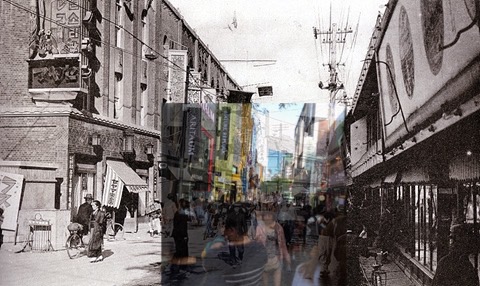 The use case builds on a paper I wrote outlining what I thought to be a good approach to using mobile learning to transform literary and historical texts into a truly interactive experience. Since then, David Fox and I have been working to try to see what might be possible in this area (as discussed in the first part of this series of posts), so I will leave you with the use case itself that spurred all this.
The use case builds on a paper I wrote outlining what I thought to be a good approach to using mobile learning to transform literary and historical texts into a truly interactive experience. Since then, David Fox and I have been working to try to see what might be possible in this area (as discussed in the first part of this series of posts), so I will leave you with the use case itself that spurred all this.
This project details efforts to create mobile learning activities emerging from the novel Three Generations by Yom Sang-Seop (염상섭), first published in serial form in 1931. The novel is a seminal work in Korean literature and is taught throughout the curriculum of Korean formal education. It chronicles the plight of a Korean family under the Japanese colonial regime (the colonial regime spanned approximately 1910-1945). It details a family struggling between the duties of tradition and the pulls of modernity. The three generations are the grandfather, Cho Ûi-gwan, a traditionally-minded landowner who buys himself a lineage genealogy to become a yangban (Korean nobleman); the father Cho Sang-hun, who has accepted much of modernity but still lives by wasting the family fortune; and the son Cho Tôk-ki, who is caught in the discord between the father and grandfather and lives an irresolute (uyubudanhada) life.
More importantly for this series of posts, however, is that Three Generations is a novel rooted in a geographical landscape, situating the activity and repeatedly mentioning place names and landmarks throughout Seoul (referred to as Keijo, the Japanese colonial name for Seoul), not unlike James Joyce’s Ulysses in its treatment of Dublin (1922). The novel follows these characters throughout Seoul and so it is a good opportunity for a field-based mobile learning activity as it can be positioned with accuracy in physical space. So using the novel to engage students in the actual spaces described in the novel is entirely plausible.
The focus group for all of this are South Korean graduate or undergraduate university students based in Seoul universities majoring in literature, history, Korean Studies, or humanities-based disciplines. The secondary focus group are secondary school students in Seoul studying in similar disciplines. These activities could also be applied to those pursuing (at the university level) or with an interest in (at the secondary school level) related majors: architecture, urban design, etc. With 38 universities in Seoul and over 2000 secondary schools throughout the country (most of which teach Three Generations as part of the curriculum), the potential reach for such a learning activity and related technological application is considerable.
As originally conceived, the activity is broken into several discrete activities, ones that aggregate into a larger project. The reflective and analytical activities surrounding the work are translated into field-based activities (a process detailed in this ebook). Participants are assigned locations, or chapters of the novel that have a geographical focus of activity. As the chapters are divided into scenes, scenes that are then found in particular locations, there are clear delineations between the activities.
They generate a reflective analysis of the assigned content, collect the field data, and compose that data collaboratively into a geocache, which are discussed in a later post in this series. The geocaches are composed collaboratively across a range of modes and media: text, audio, video, image, GPS. The groups are then responsible for embedding the geocaches in the local environment (by drawing on GPS) along with finding aids. Groups of students in future classes or cohorts can find these embedded (digital) geocaches, collect the compositions from each, log their discoveries, and re-assemble the novel, but that is a bit outside the scope of the use case described here.
Ultimately, the point is that this is intended to be replicable across different texts and different locales. We should be able to apply it to Dublin as easily as Seoul, or anywhere else in between. Without the technical requirements being met, however, we are left with solutions of one-off daisy chains of applications to manage this activity. Thrown together to meet one particular need for one particular text. Not ideal of teaching or managing learning.
So up next we will discuss our the mapping situation, what exists and what is missing.


Annotation, #mLearning, and Geocaching Part #2: The Use Case in #Seoul. @rexsavior https://t.co/vMYvJPn6DX https://t.co/LRZaiyJxSH
[…] Annotation, mLearning, and Geocaching Part #2: The Use Case […]
[…] Annotation, mLearning, and Geocaching Part #2: The Use Case […]
[…] Annotation, mLearning, and Geocaching Part #2: The Use Case […]
[…] Annotation, mLearning, and Geocaching Part #2: The Use Case […]